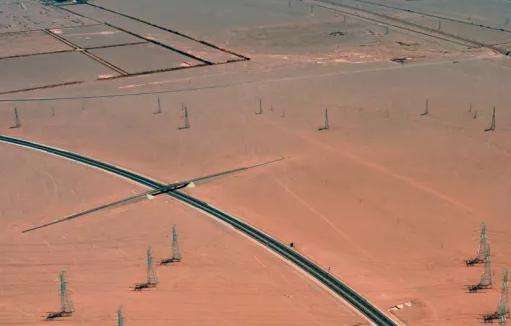It depends on the power of the wind turbine. For example, if a 100-kilowatt wind turbine can operate at full load, it can generate 100 kilowatt-hours of electricity per hour. One day is 24x100=2400 kWh. 100kw is the rated output of the wind turbine. Due to the influence of factors such as actual wind strength and wind direction, the actual output (actual power generation) generally does not reach 100kw. Generally, it is ideal to achieve 80% load output. Therefore, the actual power generation is about 0.8 degrees/hour.
Wind power generates approximately 1.4 kilowatt hours of electricity per cycle.
Take a 1,500-kilowatt wind turbine unit as an example. The blades of the unit are about 35 meters long (about 12 stories high). Each rotation of the wind turbine takes about 4-5 seconds (but the blade tip speed at this time can reach more than 280 kilometers per hour, comparable to the speed of a high-speed train) and can generate about 1.4 kilowatt hours of electricity. Under normal full power conditions, one day's power generation can be used by 15 families for one year.
Generally speaking, Category 3 winds are valuable for utilization. However, from an economic and reasonable perspective, wind speeds greater than 4 meters per second are suitable for power generation. According to measurements, a 55-kilowatt wind turbine has an output power of 55 kilowatts when the wind speed is 9.5 meters per second; when the wind speed is 8 meters per second, the power is 38 kilowatts; when the wind speed is 6 meters per second, the output power of the unit is only 55 kilowatts. 16 kilowatts; and when the wind speed is 5 meters per second, it is only 9.5 kilowatts.
The principle of wind power generation :
The principle is to convert the kinetic energy of the wind into mechanical kinetic energy, and then convert the mechanical energy into For electric kinetic energy, this is wind power. The principle of wind power generation is to use wind power to drive the windmill blades to rotate, and then use a speed increaser to increase the speed of rotation to prompt the generator to generate electricity.
According to windmill technology, power generation can start at a breeze speed of about three meters per second (the degree of breeze). Wind power is becoming a craze around the world because it does not require the use of fuel and does not produce radiation or air pollution.
The devices required for wind power generation are called wind turbines. This kind of wind turbine can be roughly divided into three parts: wind wheel (including tail rudder), generator and tower.
The wind wheel is an important component that converts the kinetic energy of the wind into mechanical energy. It is composed of several blades. When the wind blows towards the blades, aerodynamic force is generated on the blades to drive the wind wheel to rotate. The blade material requires high strength and light weight, and is often made of fiberglass or other composite materials (such as carbon fiber).
The iron tower is the structure that supports the wind wheel, rudder and generator. It is generally built relatively high in order to obtain larger and more uniform wind force and to have sufficient strength. The height of the tower depends on the impact of ground obstacles on wind speed and the diameter of the wind wheel. It is generally in the range of 6-20 meters.
The function of the generator is to transfer the constant speed obtained from the wind wheel to the generator through speed increase.The electrical mechanism operates uniformly, thus converting mechanical energy into electrical energy.
Reference for the above content: Baidu Encyclopedia - Wind Power














